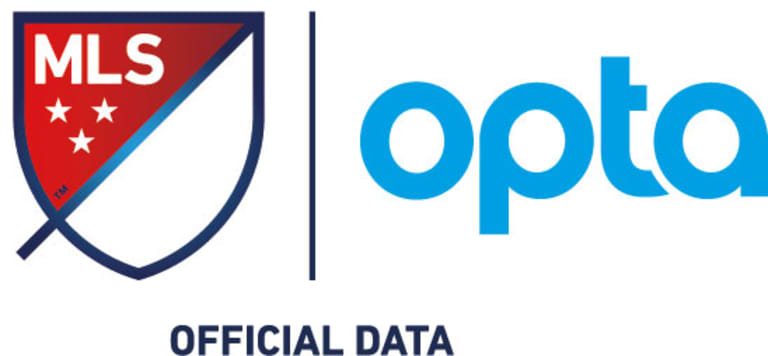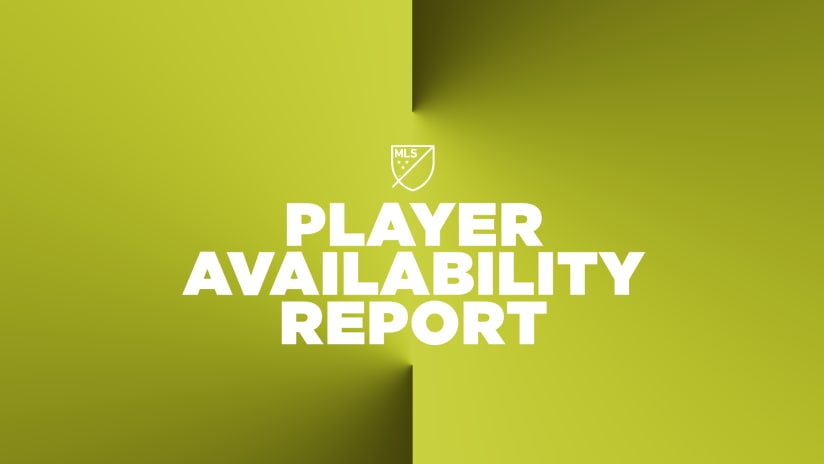Want to know the objective quality of the goalscoring opportunities your team creates from week to week? Thanks to Opta Sports, you can find just that at MLSsoccer.com during the 2017 season.
You may already be familiar with Expected Goals (xG), a quantitative measure of chance quality that takes shot location, shot type, buildup and other factors into account and calculates how likely a particular shot is to result in a goal. For example, if a shot with a specific set of characteristics is likely to be scored one time in 10 occurrences, it would be valued at 0.10 xG. The calculations are based on extensive historical shot data (more than 300,000 shots from the Opta database at the time of writing) and are adjusted for individual leagues.
Why do Expected Goals matter? Over time, they are a more consistent measure of performance than actual goals since a team or player’s xG output tends to fluctuate less from match-to-match. Goals win points, but xG give us more context for evaluating team and individual performance.
If you want to learn more about Expected Goals you can dig into our glossary term or check out OptaPro's post about the metric.
Below you can find team-by-team xG numbers from the 2016 season, provided by Opta Sports. We've added each team's actual goals, goals against and goal differential to help provide context. Teams are ordered by Supporters' Shield finish, with FC Dallas first and Chicago last.
Team |
Goals |
xG |
GA |
xGA |
GD |
xGD |
|---|---|---|---|---|---|---|
DAL |
50 |
48.76 |
40 |
36.17 |
10 |
12.59 |
COL |
39 |
36.73 |
32 |
41.68 |
7 |
-4.95 |
NY |
61 |
49.20 |
44 |
43.13 |
17 |
6.07 |
NYC |
62 |
46.89 |
57 |
53.15 |
5 |
-6.26 |
TOR |
51 |
50.40 |
39 |
33.26 |
12 |
17.14 |
LA |
54 |
46.22 |
39 |
46.55 |
15 |
-0.33 |
SEA |
44 |
47.32 |
43 |
44.16 |
1 |
3.16 |
SKC |
42 |
47.18 |
41 |
37.40 |
1 |
9.77 |
DC |
53 |
51.75 |
47 |
45.13 |
6 |
6.62 |
RSL |
44 |
43.34 |
46 |
49.00 |
-2 |
-5.65 |
MTL |
49 |
42.56 |
53 |
45.74 |
-4 |
-3.18 |
POR |
48 |
51.84 |
53 |
43.97 |
-5 |
7.87 |
PHI |
52 |
48.19 |
55 |
44.72 |
-5 |
3.47 |
NE |
44 |
42.93 |
54 |
51.13 |
-10 |
-8.20 |
ORL |
55 |
48.33 |
60 |
61.41 |
-5 |
-13.08 |
VAN |
45 |
41.94 |
52 |
53.46 |
-7 |
-11.53 |
SJ |
32 |
39.47 |
40 |
42.33 |
-8 |
-2.87 |
CLB |
50 |
54.81 |
58 |
48.34 |
-8 |
6.46 |
HOU |
39 |
36.11 |
45 |
46.68 |
-6 |
-10.57 |
CHI |
42 |
37.33 |
58 |
43.87 |
-16 |
-4.67 |
Wondering what you should be taking away from these numbers? Here are a few of my takeaways.
1. Look for Columbus to be much improved in 2017. Crew SC's xGD pegged them as the sixth-best team in MLS last year. The table did not reflect that fact, as their actual goal difference was one of the worst in MLS (-8). That suggests Columbus were unlucky in 2016 -- a tricky term, to be sure -- and the underlying performances were better than the results reflected.
2. NYCFC's explosive attack may be in line for a drop-off in production. Not only did Frank Lampard (and his 12 goals) retire, but it turns out the underlying data suggests the club was fortunate to score as many goals as they did based on the quality of chances created. That kind of exceptional finishing is unlikely to be replicated.
3. Toronto FC were really good last year. The Reds' +17.14 xGD was by far the best in MLS last year. Based on Opta's xG model, their actual GD of +12 means a number of quality chances went begging. Look for Toronto to improve on their 53-point output in 2016.












